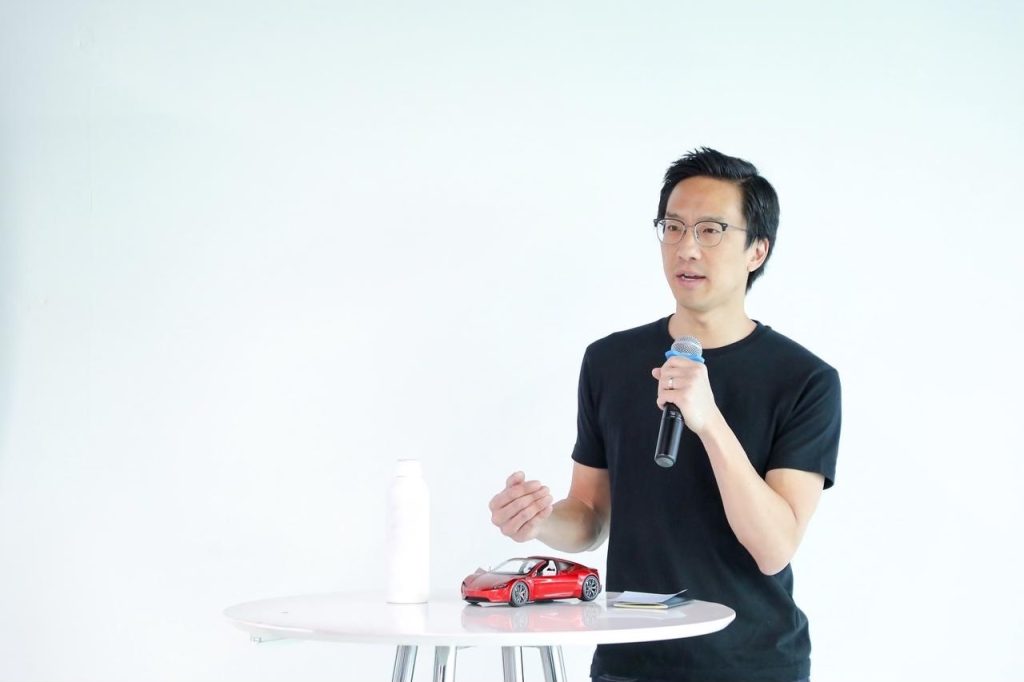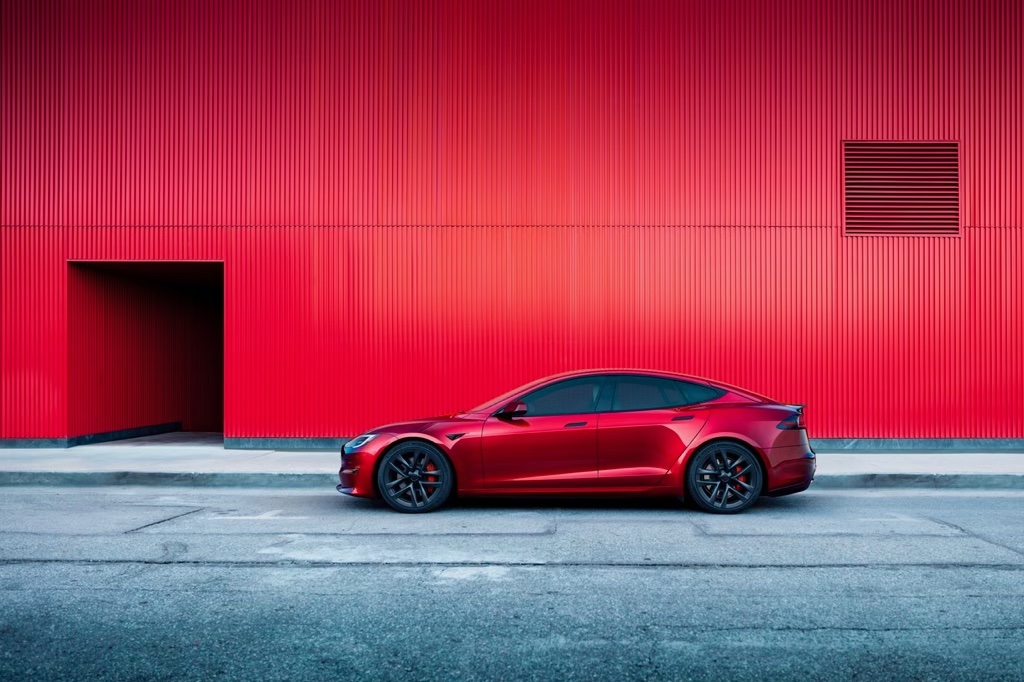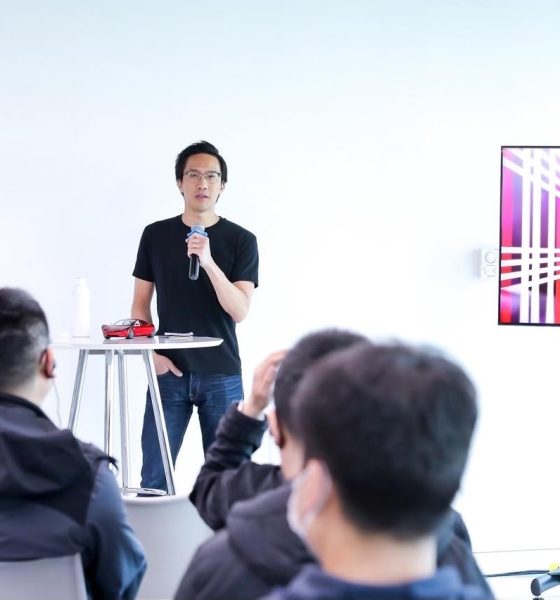Tesla China recently held in-depth discussions with members of the media from Shanghai, Guangzhou, Chengdu, and other cities to discuss several pertinent topics related to the company, its operations, and its vehicles. David Lau, Vice President of Global Software Engineering at Tesla, spoke during the media event.
The topics discussed included “How Tesla Cultivates Top Engineers” and “The Intelligent Capability of the New Model S/X.” But more importantly, the event focused on how Tesla’s “Plaid Mode” translates not only to the Model S and Model X’s 0-60 mph launch — it also applies to the company’s software development. As such, other topics discussed during the media event were “Enabling Plaid Mode in Software Development” and “How Tesla’s Software Development Maintains Plaid Speed.”

“Tesla has always been challenging tradition, challenging industry conventional thinking, and challenging its own comfort zone… This is indeed difficult, but as long as we keep pushing ourselves to continuously break through boundaries, there is nothing that cannot be achieved,” Lau said at the event, whose local media notes were shared by an attendee to Teslarati.
The Tesla executive also highlighted that Elon Musk’s references to “Plaid” being beyond “Ludicrous” lies beyond pop culture. It also represents an engineer culture with a persistent — if not stubborn — pursuit of disruptive innovation and breakthroughs. This way of thinking appears to have worked, as surveys of engineering students from North America by consulting firm Universum showed that Tesla had become one of the most attractive automotive companies in the industry. In 2020, Tesla was ranked first in the list of companies that engineering students want to work for the most.

“At Tesla, teams have a persistent pursuit of disruptive innovation and breakthroughs. For example, daily discussions revolve around topics such as ‘how to reduce wiring and weight to simplify design,’ ‘how to improve display performance while reducing costs,’ and ‘how to strengthen the technical security network.’ Continuously creating an engineer-friendly atmosphere and attracting a large number of industry experts to Tesla is aimed at achieving a common goal – accelerating the world’s transition to sustainable energy,” Tesla China’s media release noted.
During the event, attendees from the media showed particular interest in the new Tesla Model S and Model X, which feature the best that the electric vehicle maker could offer today. The executive highlighted that the new Model S and Model X are benchmarks since they play the parts of a “family car” and a “super performance car” at the same time. And thanks to the company’s work in in-vehicle tech, the new Model S and Model X have also become capable “in-car gaming systems” whose performance allows users and passengers to play premium titles.

While Lau’s discussions on how Tesla’s “Plaid” philosophy and the new Model S and Model X were compelling, his comments while discussing the company’s identity as a software-defined automaker were also very interesting. As noted by the executive, Tesla’s software work has been setting benchmarks for a very long time. Lau joined the company way back in 2012, and at the time, Tesla already had the capability to improve its vehicle controllers through over-the-air (OTA) software updates. Rival carmakers were only able to update their entertainment systems at most back then.
“Many people think that the vehicle itself is a completely independent system, but in the Tesla software team’s view, the vehicle software system is only a part of the large software system. The implementation of a large number of vehicle software functions requires consideration of the network and service system. We hope to provide timely feedback on corresponding functions according to customers’ real-time driving experience and continuously optimize the user experience,” Lau said.
Don’t hesitate to contact us with news tips. Just send a message to simon@teslarati.com to give us a heads up.

Elon Musk
Elon Musk and Tesla AI Director share insights after empty driver seat Robotaxi rides
The executives’ unoccupied tests hint at the rapid progress of Tesla’s unsupervised Robotaxi efforts.

Tesla CEO Elon Musk and AI Director Ashok Elluswamy celebrated Christmas Eve by sharing personal experiences with Robotaxi vehicles that had no safety monitor or occupant in the driver’s seat. Musk described the system’s “perfect driving” around Austin, while Elluswamy posted video from the back seat, calling it “an amazing experience.”
The executives’ unoccupied tests hint at the rapid progress of Tesla’s unsupervised Robotaxi efforts.
Elon and Ashok’s firsthand Robotaxi insights
Prior to Musk and the Tesla AI Director’s posts, sightings of unmanned Teslas navigating public roads were widely shared on social media. One such vehicle was spotted in Austin, Texas, which Elon Musk acknowleged by stating that “Testing is underway with no occupants in the car.”
Based on his Christmas Eve post, Musk seemed to have tested an unmanned Tesla himself. “A Tesla with no safety monitor in the car and me sitting in the passenger seat took me all around Austin on Sunday with perfect driving,” Musk wrote in his post.
Elluswamy responded with a 2-minute video showing himself in the rear of an unmanned Tesla. The video featured the vehicle’s empty front seats, as well as its smooth handling through real-world traffic. He captioned his video with the words, “It’s an amazing experience!”
Towards Unsupervised operations
During an xAI Hackathon earlier this month, Elon Musk mentioned that Tesla owed be removing Safety Monitors from its Robotaxis in Austin in just three weeks. “Unsupervised is pretty much solved at this point. So there will be Tesla Robotaxis operating in Austin with no one in them. Not even anyone in the passenger seat in about three weeks,” he said. Musk echoed similar estimates at the 2025 Annual Shareholder Meeting and the Q3 2025 earnings call.
Considering the insights that were posted Musk and Elluswamy, it does appear that Tesla is working hard towards operating its Robotaxis with no safety monitors. This is quite impressive considering that the service was launched just earlier this year.
Elon Musk
Starlink passes 9 million active customers just weeks after hitting 8 million
The milestone highlights the accelerating growth of Starlink, which has now been adding over 20,000 new users per day.

SpaceX’s Starlink satellite internet service has continued its rapid global expansion, surpassing 9 million active customers just weeks after crossing the 8 million mark.
The milestone highlights the accelerating growth of Starlink, which has now been adding over 20,000 new users per day.
9 million customers
In a post on X, SpaceX stated that Starlink now serves over 9 million active users across 155 countries, territories, and markets. The company reached 8 million customers in early November, meaning it added roughly 1 million subscribers in under seven weeks, or about 21,275 new users on average per day.
“Starlink is connecting more than 9M active customers with high-speed internet across 155 countries, territories, and many other markets,” Starlink wrote in a post on its official X account. SpaceX President Gwynne Shotwell also celebrated the milestone on X. “A huge thank you to all of our customers and congrats to the Starlink team for such an incredible product,” she wrote.
That growth rate reflects both rising demand for broadband in underserved regions and Starlink’s expanding satellite constellation, which now includes more than 9,000 low-Earth-orbit satellites designed to deliver high-speed, low-latency internet worldwide.
Starlink’s momentum
Starlink’s momentum has been building up. SpaceX reported 4.6 million Starlink customers in December 2024, followed by 7 million by August 2025, and 8 million customers in November. Independent data also suggests Starlink usage is rising sharply, with Cloudflare reporting that global web traffic from Starlink users more than doubled in 2025, as noted in an Insider report.
Starlink’s momentum is increasingly tied to SpaceX’s broader financial outlook. Elon Musk has said the satellite network is “by far” the company’s largest revenue driver, and reports suggest SpaceX may be positioning itself for an initial public offering as soon as next year, with valuations estimated as high as $1.5 trillion. Musk has also suggested in the past that Starlink could have its own IPO in the future.
News
NVIDIA Director of Robotics: Tesla FSD v14 is the first AI to pass the “Physical Turing Test”
After testing FSD v14, Fan stated that his experience with FSD felt magical at first, but it soon started to feel like a routine.

NVIDIA Director of Robotics Jim Fan has praised Tesla’s Full Self-Driving (Supervised) v14 as the first AI to pass what he described as a “Physical Turing Test.”
After testing FSD v14, Fan stated that his experience with FSD felt magical at first, but it soon started to feel like a routine. And just like smartphones today, removing it now would “actively hurt.”
Jim Fan’s hands-on FSD v14 impressions
Fan, a leading researcher in embodied AI who is currently solving Physical AI at NVIDIA and spearheading the company’s Project GR00T initiative, noted that he actually was late to the Tesla game. He was, however, one of the first to try out FSD v14.
“I was very late to own a Tesla but among the earliest to try out FSD v14. It’s perhaps the first time I experience an AI that passes the Physical Turing Test: after a long day at work, you press a button, lay back, and couldn’t tell if a neural net or a human drove you home,” Fan wrote in a post on X.
Fan added: “Despite knowing exactly how robot learning works, I still find it magical watching the steering wheel turn by itself. First it feels surreal, next it becomes routine. Then, like the smartphone, taking it away actively hurts. This is how humanity gets rewired and glued to god-like technologies.”
The Physical Turing Test
The original Turing Test was conceived by Alan Turing in 1950, and it was aimed at determining if a machine could exhibit behavior that is equivalent to or indistinguishable from a human. By focusing on text-based conversations, the original Turing Test set a high bar for natural language processing and machine learning.
This test has been passed by today’s large language models. However, the capability to converse in a humanlike manner is a completely different challenge from performing real-world problem-solving or physical interactions. Thus, Fan introduced the Physical Turing Test, which challenges AI systems to demonstrate intelligence through physical actions.
Based on Fan’s comments, Tesla has demonstrated these intelligent physical actions with FSD v14. Elon Musk agreed with the NVIDIA executive, stating in a post on X that with FSD v14, “you can sense the sentience maturing.” Musk also praised Tesla AI, calling it the best “real-world AI” today.










